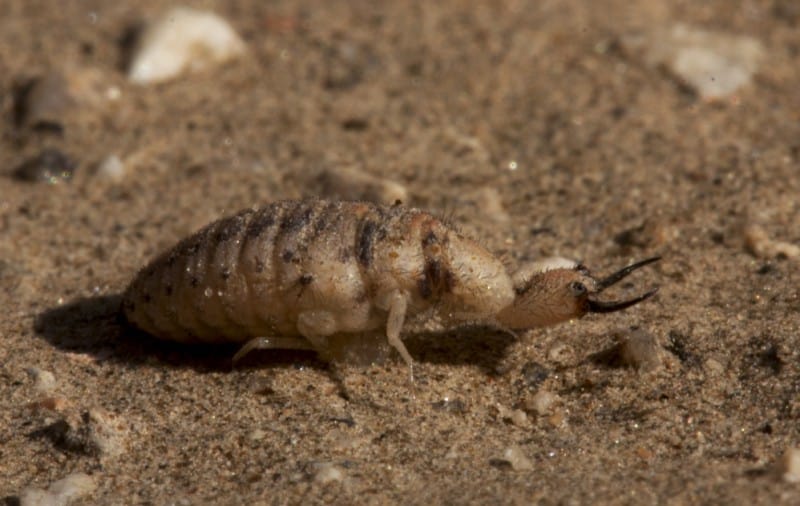Antlion Facts
- Antlion forms the collective name applied to a remarkable family of insects containing more than 2,000 known species. Yet the term more commonly finds itself applied to the larval form.
- The many species of this genus remain best known for the extremely predatory nature of the larvae, more than the adults themselves.
- Mature individuals of the different types remain much less well-known. In general, these often get mistaken for damselflies or dragonflies.
- The exact meaning, as well as the origin, of the distinctive common name, remains rather unclear.
Antlion Physical Characteristics
The physical appearance of the larval and the adult Antlion varies dramatically. The larvae also often get referred to as a doodlebug in North America.
This name derives from the uniquely shaped tracks individuals leave in the sand as they move across it.
The adult individuals of the various Antlion varieties vary greatly in size. Some possess a rather tiny wingspan of only 0.8 in (2 cm). Others attain a wingspan of as much as 6 in (15 cm).
The body grows highly elongated and slim, resembling a dragonfly. The colors of the different types of adults typically consist of various shades of brown and gray.
- Kingdom: Animalia
- Phylum: Euarthropoda
- Class: Insecta
- Order: Neuroptera
- Family: Myrmeleontidae
Antlion Distribution, Habitat, and Ecology
The various species of the Antlion appear worldwide in all temperate or tropical climates. A few varieties of this genus also live in cold-temperate regions.
Most varieties typically primarily prefer to inhabit regions of rather loose, sandy soil.
Depending on the species, the adults feed on either insects or pollen and nectar from plants. The larva of all species feeds upon small insects, with ants being the primary choice.
The larvae feed as ambush predators and dig small sandpit traps, then lay in wait at the bottom of the pit for small insects.
Check out our other articles on 5 Remarkable Bolivian Herbaceous Plants, Striped Possum, Crane Fly, Mammoth Hot Springs, Damselfly, Hines Emerald Dragonfly, Black Caiman

